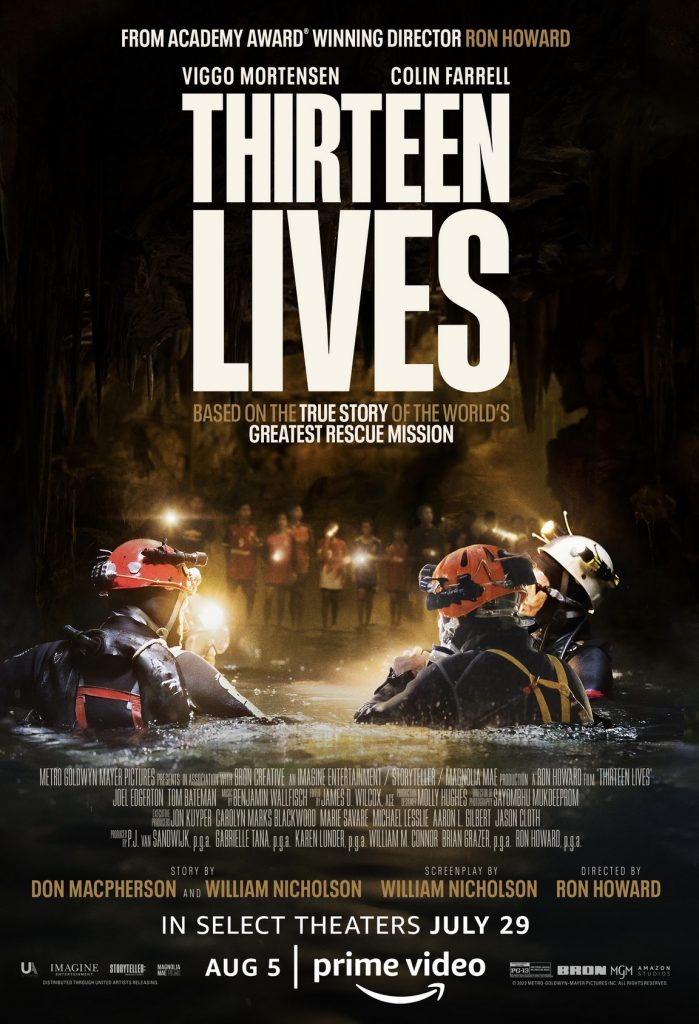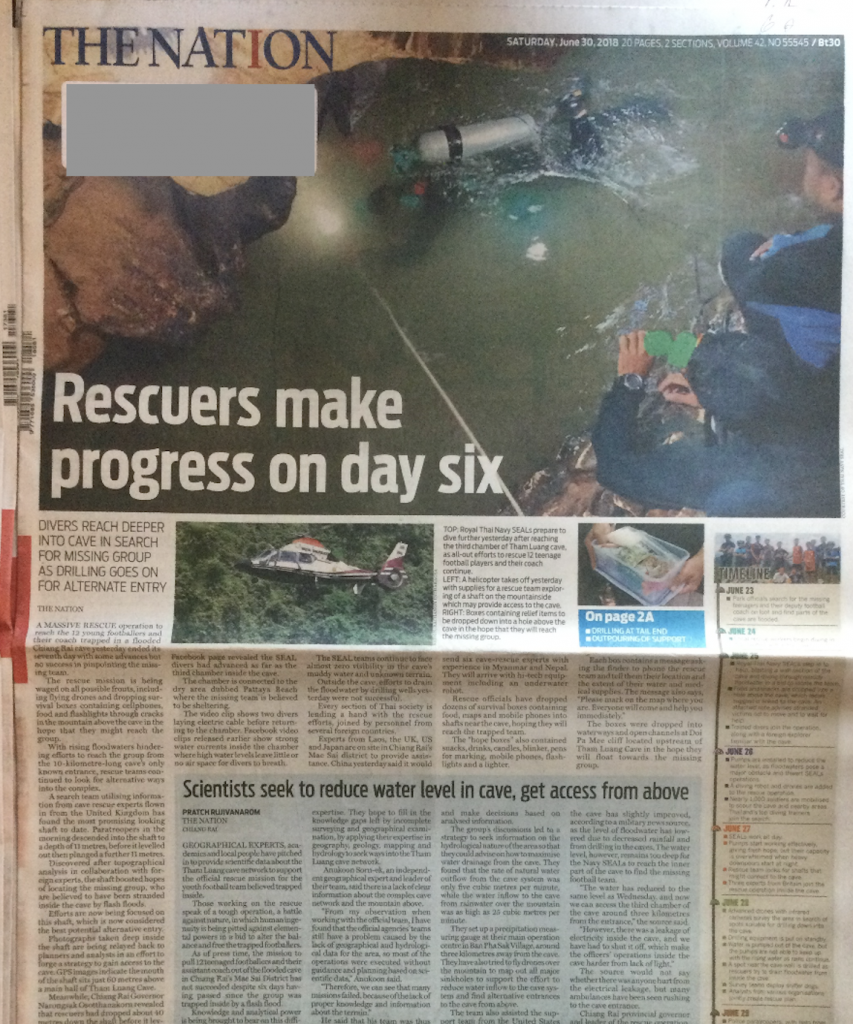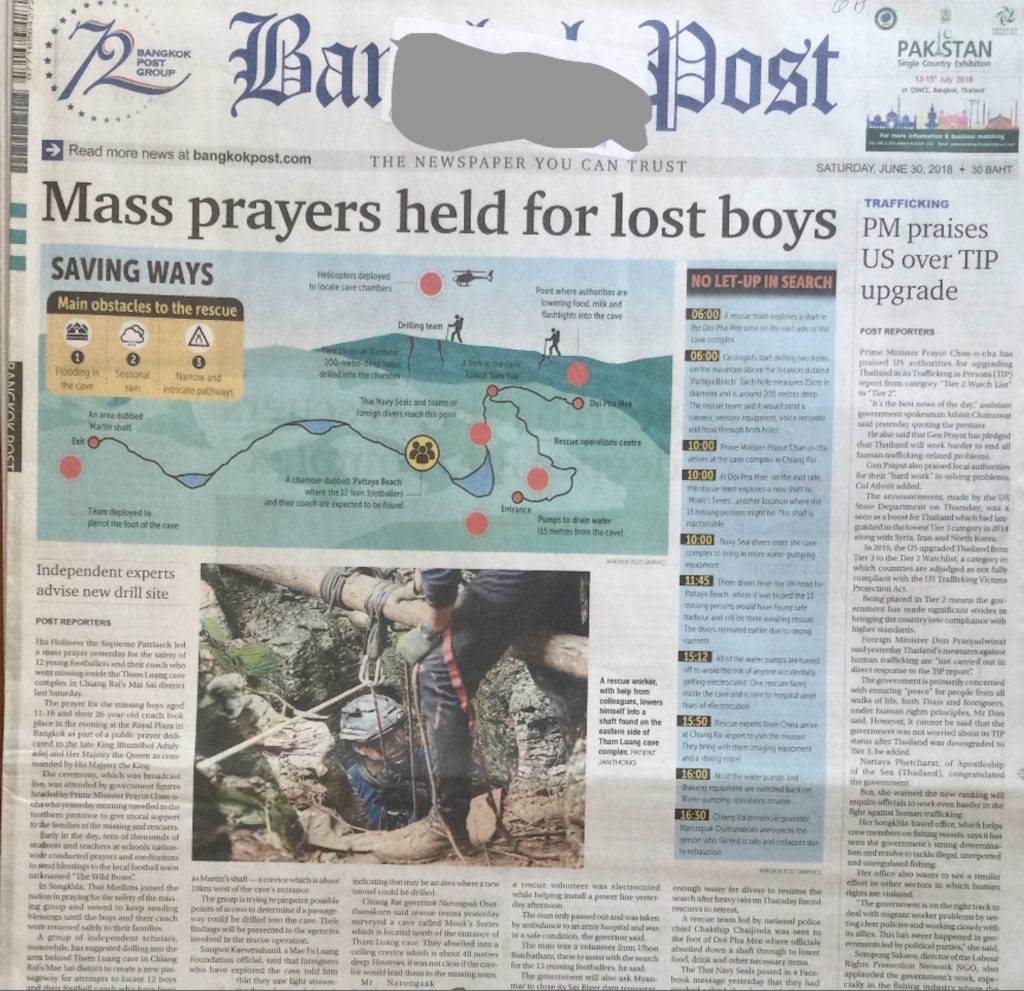
9 Aug, 2022
Sixteen thought-prompting takeaways from “Thirteen Lives”
Released worldwide last week, “Thirteen Lives” is much more than just a movie. In a world obsessed with story-telling, it is a Grand Story of the first order. Like all stories of heroism, it can be viewed, enjoyed and forgotten, or it can be studied as a work of art or literature. I opted for the latter. The extremely well researched script is dotted with specific learning curves which have been brought to life via stunning film-making. Here are a few takeaways that may add value, broaden the context and give deeper meaning to the magnificent effort.

1. What is the value of a human life, especially children? 13 Lives were saved thanks to a massive rescue operation. Hundreds more children are dying every day worldwide in wars and conflict. Don’t those lives matter, too?
2. Teamwork is critical. Beyond just the divers, people from all walks of life, regardless of nationality, caste, colour or religion came together in the pursuit of a common and noble cause. There may have been differences – there always are — but at the end of the day, what had to be done had to be done.
3. Problems have to be solved at source, and holistically. While the rescue operation was being planned, the water levels had to be kept under control. Water was being pumped out at one end but it also had to be blocked from gushing in from the hilltop sinkholes. The internal and external factors both had to be dealt with, similar to the Covid-19 pandemic.
4. Prevention is better than cure. Why did the children venture into the cave in the first place? Why were there no personnel at the cave? If someone had been on duty, and storm warnings activated, the coach would not have been permitted to take the kids into the cave.
5. Hardware vs Software — While modern technology and the sophisticated diving equipment is very important in these rescue operations, at the end of the day it was all about human experience, good training, crisis management and quick thinking. High-tech can never be fully effective without high-touch.
6. The local people know best. City slickers may have the technical solutions but it is of limited use without local knowledge. The local community expert knew the exact locations of the sinkholes. When the rescue workers ran short of pipes, the local villagers showed them how to use bamboos which were plentiful, effective and cost-free.
7. Unconventional solutions can work, even if risky. There was no other choice except to sedate the kids and bring them down like “packages”, with the divers becoming mere “delivery boys”. Management gurus call this “thinking outside the box.”
8. Sacrifice is critical to the effort. The local villagers agreed to have their ricefields flooded by the diverted water. Short-term pain was necessary for long-term gain. No doubt, compensation was forthcoming but the fact that they agreed to it in the first place was an act of high nobility.
9. No blame game: The coach is thanked for saving the children. He’s not blamed for taking them into the cave. Both the minister and the provincial governor juggle their decisions but make it clear that they, not the divers, will be ones held to account.

10. No ego-trips. The divers come across as a down-to-earth technocrats, just keen to get the job done. None of them are pursuing media attention, profit nor self-aggrandisement.
11. Safety measures. All these potentially dangerous places are popular on the “ecotourism” circuit. They need to equipped with survival and safety equipment, similar to fire extinguishers, life-jackets or first-aid kits. Are they? Proper signage, especially weather warnings, is imperative.
12. Human equality: Some of the boys were from the Shan hilltribes, and stateless. When crises strike, all forms of human life are equal. They also played together as equals on a soccer team. A clear message for societies and communities in which social, ethnic and cultural discrimination is widespread.
13. Media management. The scramble for news was intense. By and large, it was very well managed and responsibly reported. Freedom and responsibility were well-balanced.
14. What happens next? The cave has become a tourist attraction. Will the numbers be well managed? Could it become an example for local destination management nationwide? Or will it become another Maya Beach?
15. Return on Investment. How much did this entire operation cost? If we, the Thai taxpayers footed the bulk of the bill, it was well worth it. Do we now need to take a closer look at how our money is spent overall, and prioritise all forms of human-centric, humanitarian and life-saving projects. Even the military budget, in this case the Royal Thai Navy, can be redeployed far more productively to fight these far more important and frequent “wars”.
16. Finally, and most important, the role of spirituality, meditation and prayer. On the outside, it was probably impossible for the “Greater Powers” to ignore the intensity of the multi-faceted spiritual effort. But inside, it was the beauty of meditation that kept the 13 Lives mentally stable all through the stress and panic of being trapped in darkness with no nourishment, no way out, no hope and no idea of time. Meditation in some shape or form is embedded in all religions and faiths. If it can be institutionalised worldwide, it will go a long way towards combatting the craziness that is leading to multiple human casualties daily, especially children.




Liked this article? Share it!